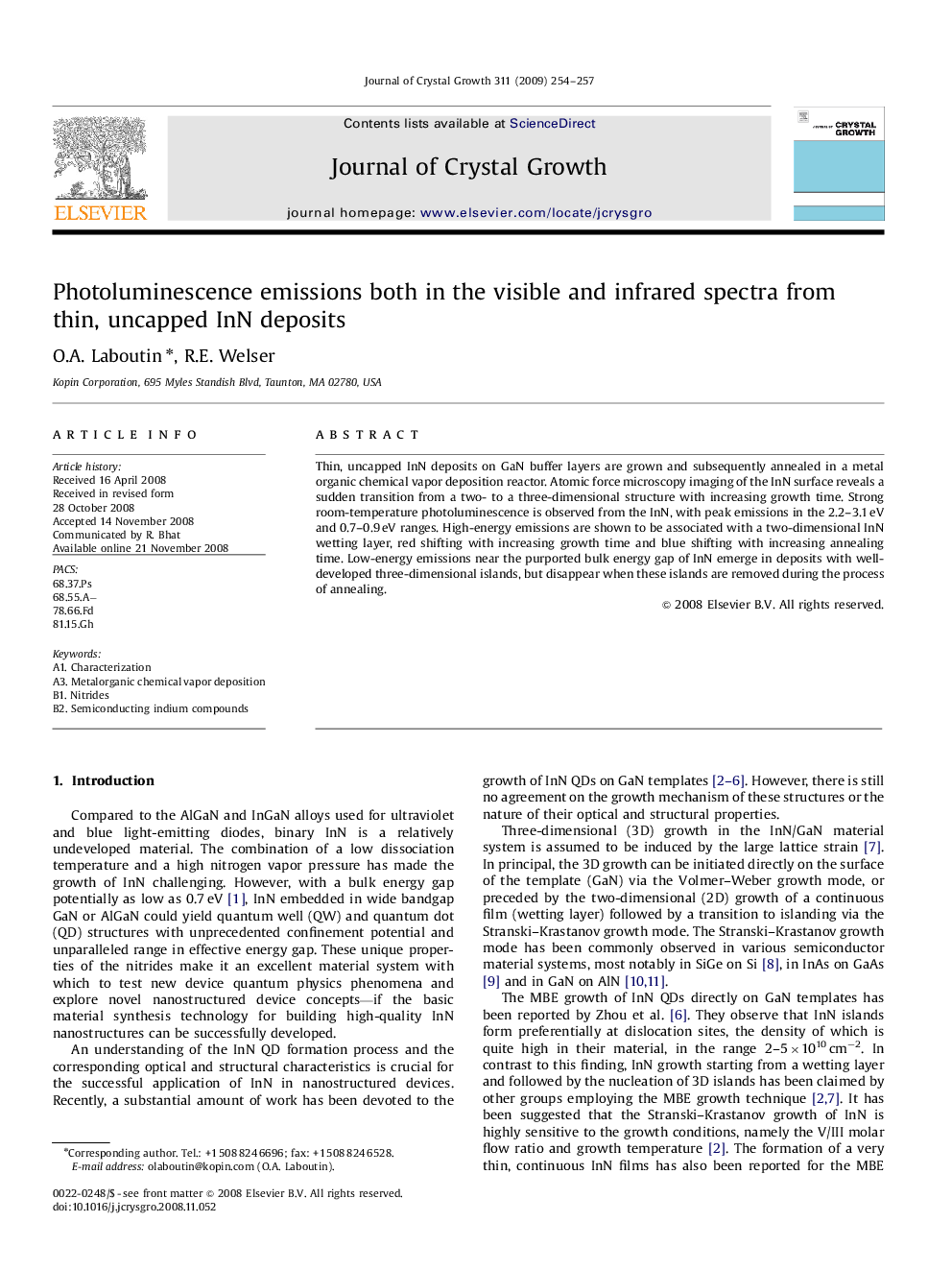| Article ID | Journal | Published Year | Pages | File Type |
|---|---|---|---|---|
| 1795039 | Journal of Crystal Growth | 2009 | 4 Pages |
Thin, uncapped InN deposits on GaN buffer layers are grown and subsequently annealed in a metal organic chemical vapor deposition reactor. Atomic force microscopy imaging of the InN surface reveals a sudden transition from a two- to a three-dimensional structure with increasing growth time. Strong room-temperature photoluminescence is observed from the InN, with peak emissions in the 2.2–3.1 eV and 0.7–0.9 eV ranges. High-energy emissions are shown to be associated with a two-dimensional InN wetting layer, red shifting with increasing growth time and blue shifting with increasing annealing time. Low-energy emissions near the purported bulk energy gap of InN emerge in deposits with well-developed three-dimensional islands, but disappear when these islands are removed during the process of annealing.
